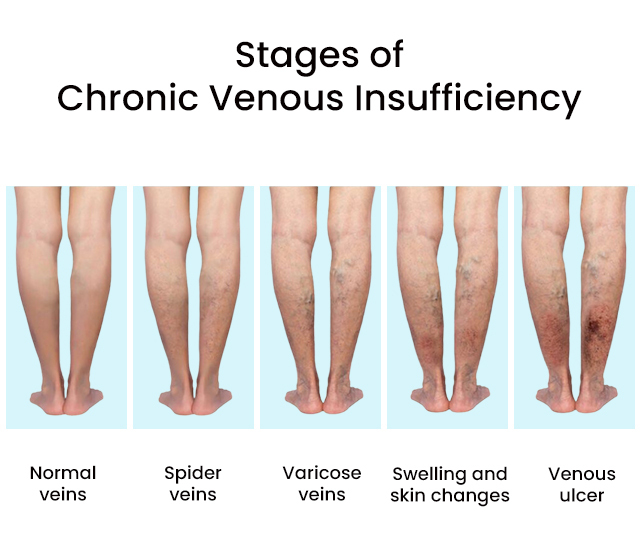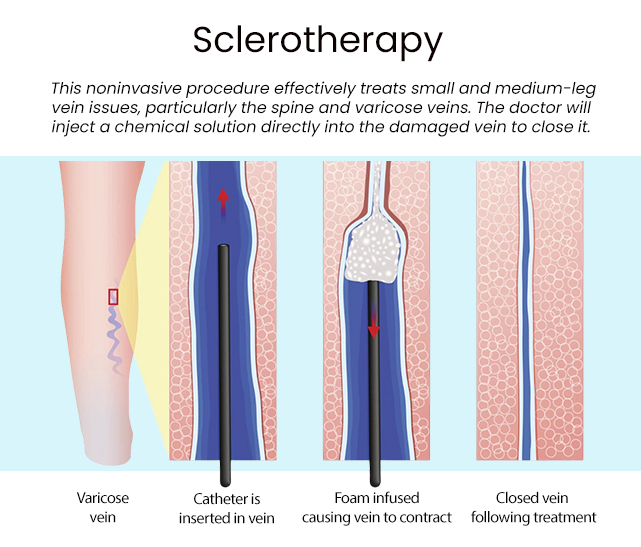If you are experiencing a feeling of heaviness in your legs, recurring pain or notice swelling, it may be a sign of a condition affecting the veins. Heavy legs after a workout are normal and expected, but legs that feel weighed down, stiff, and tired for no apparent reason need attention. Schedule an appointment with Dr. Sergei A. Sobolevsky at Downtown Vein & Vascular Center to prevent the problem from getting more serious and seek relief. Dr. Sobolevsky is an experienced endovascular specialist and recommends safe and effective treatments that alleviate the unpleasant feelings of heaviness and pain in your legs to help you live a normal, healthy, and active life.
Why Do Your Legs Feel Heavy?
Heavy legs are generally caused by poor blood circulation. Blood circulation problems usually occur in the lower part of the body, especially the legs, when blood flow from the legs to the heart is affected, causing heaviness. It is because the lower section of the body needs to fight against gravity to transfer the blood back up to the heart.
If the leg muscles lose some of their strength and the veins are damaged or broken, they cannot properly circulate the blood back up to the heart, thus causing that heavy leg sensation. The heavy feeling comes from the excess blood in your legs that cannot flow correctly. Heaviness can also result from the swelling as the blood pools. If left untreated, this problem can lead to more critical issues.
Read more: Checking Yourself for DVT At Home
What Causes Heavy Legs?
The feeling of having heavy legs comes from venous insufficiency or venous disorders that damage your veins. Veins are blood vessels that carry deoxygenated blood from your organs and tissues to the heart.
When the veins are damaged and fail to circulate the blood back up to the heart, it results in the sensation of heavy legs. The heaviness is due to the surplus blood in the legs, which does not flow properly.
Some underlying vascular conditions or disorders in the body that can cause heavy legs include:
Superficial venous insufficiency (SVI) – This condition causes leg discomfort due to increased venous pressure or pooling of blood in the superficial veins of the legs as the blood is not being pumped back to your heart. Heavy leg feeling and pain along with swelling, throbbing, and achy legs are common signs of SVI.
Deep venous insufficiency (DVI) – Its symptoms are similar to superficial venous insufficiency, but it is a condition that affects the deeper veins. It is often difficult to tell you are suffering from DVI unless your doctor makes an accurate diagnosis. DVI may occur separately or in combination with SVI.
Peripheral artery disease (PAD) – It is a type of cardiovascular disease that affects the veins and arteries. It occurs when plaque or fat buildup starts in the walls of the arteries, making it difficult for blood to pass through and deliver oxygen to the extremities, such as the legs. When the circulation of blood to the legs and feet is affected, it causes them to ache, feel heavy, and have cramps. These symptoms occur typically with increased activity levels, such as walking.
Varicose veins – Varicose veins are a common condition caused by weak or damaged vein walls and valves. Veins become enlarged when they start to lose elasticity, and their valves become weak, allowing blood that should be recirculating through the body to pool in the legs. This pooled blood can make the legs feel heavy and tired. Due to the pooling of blood in the vein, they appear bigger, bumpy and knotted than the surrounding veins.
Obesity – Being overweight or obese can lead to several other disorders that can cause heavy legs. Excessive weight with a sedentary lifestyle can lead to circulation problems that worsen feelings of heaviness in the legs. Extra weight can also put more pressure on the joints, muscles, and tendons of the legs, especially if you stand for long periods during the day, and lead to symptoms associated with heavy legs.
Overtraining syndrome – Athletes need to train hard to improve their performance. However, when they continue to train without giving the body time to recover, they can end up with several health-related problems, including heavy legs, fatigue, and potential injury. Overtraining refers to pushing just a little bit harder every day when you think you are capable of practicing and muscles don’t get time to repair themselves.
If it is not treated timely, venous insufficiency can lead to varicose veins or other vein diseases.
Common causes of vein problems include:
- Sedentary lifestyle
- Hormonal imbalance
- Obesity
- Genes
- Age
- Vitamin deficiency in the body
- Lack of physical activity
Luckily, treatment options are available for varicose and spider veins and other venous disorders, despite the onset of the condition. It is best to consult a trusted vein doctor as soon as you notice heavy legs and other symptoms to seek timely relief.

Read more: What Are the Main Causes of Swelling in a Single Leg?
What Causes Heavy Legs?
People with heavy legs usually describe them as:
- Achy
- Itchy
- Tired
- Crampy
- Stiff
Heavy legs can also appear:
- Swollen due to circulatory problems
- Bumpy due to varicose veins
- Pale or blueish due to poor circulation of blood in the veins
- With sores that are slow to heal as the skin needs a proper supply of blood to heal
Heavy legs are accompanied by several other symptoms too. They include:
- Dullness or numbness
- Throbbing pain in one or both legs
- Coldness or tingling in the legs
- Difficulty walking or standing as the day goes on
It is necessary to report these symptoms to your doctor as they help with the accurate diagnosis of your condition. Veins issues can be treated with safe and effective treatment plans.
How to Treat Venous Insufficiency
Treatment for venous insufficiency includes lifestyle changes and compression therapy. If these measures do not show desired improvement, your doctor may recommend a minimally invasive procedure or surgery to improve blood circulation.
Treatment aims to:
- Help the blood flow better in your veins
- Heal the sores or ulcers and prevent them from coming back
- Improve the skin color and appearance
- Reduce pain, swelling, and feeling of heaviness
- Restore your mobility and normal activities
Home Treatment for Heavy Legs
Home remedies can help to manage this condition and relieve the pain you are experiencing. They include:
- Losing weight as obesity can lead to various issues related to venous insufficiency, including varicose veins and diabetes that cause a buildup of fatty deposits in the arteries, resulting in blood flow blockage
- Quitting smoking
- Taking proper rest and giving your body adequate time to heal or recover between intense exercise sessions
- Elevating your legs about 6 to 12 inches above your heart level or massaging your legs to help the blood pooling in your legs circulate properly and drain out to the rest of the body
- Wearing compression stockings to reduce leg pain and swelling and promote the flow of blood
- Staying active and exercising regularly to keep your cholesterol levels down and improve circulation
- Avoiding hot baths as heat can widen the veins, which makes it harder for the blood to flow through the legs
- Preventing sitting or standing in the same position for too long as it could affect the circulation of blood and worsen the symptoms
- Cutting down the intake of salty or sodium-rich foods as they cause the body to retain water
If lifestyle changes do not relieve your symptoms and you continue to experience heaviness or severe discomfort in the legs, call your healthcare provider.
Read more: Ankle Discoloration: A Sign of Vein Disease
Medical Treatments for Heavy Legs
The doctor will determine the best treatment depending on how far your condition has progressed and any other medical conditions you have. He will customize the treatment plan for your individual needs.
Safe vein treatment options include advanced minimally invasive, gentle procedures to reroute blood through healthier veins and ensure proper circulation of blood. They are:
Sclerotherapy – This noninvasive procedure effectively treats small and medium-leg vein issues, particularly the spine and varicose veins. The doctor will inject a chemical solution directly into the damaged vein to close it.

Endovenous Laser Therapy (EVLT) – This treatment method is used for treating large vein disease and larger varicose veins on your legs. The damaged veins are identified with the help of ultrasound, as they are not visible on the surface. The doctor inserts a small catheter into the abnormal vein and uses laser light to produce heat, which burns or collapses the vein.
Radiofrequency ablation (RFA) – This minimally invasive procedure also treats large vein disease and varicose veins on the legs. It uses radiofrequency energy to heat the wall of the affected vein so that it collapses.
VenaSeal – Also known as endovenous adhesive ablation, this mode of treatment works by delivering a small amount of a specially formulated medical adhesive to seal or close the diseased vein through a small catheter. As the affected blood vessel is closed, blood is rerouted to nearby healthy veins, relieving painful symptoms.
Phlebectomy – It is the best-known method for removing damaged veins near the surface of the skin. The doctor makes several small punctures in the skin to remove the damaged vein. This procedure does not require stitches and is usually performed with ELVA or RFA.
Depending on the type of procedure your doctor recommends, you may be able to resume your normal activities a short time after leaving the hospital.
Read more: Spine Jack Procedure
If you continue to experience leg heaviness or other symptoms that could indicate a leg vein issue, it is essential to seek medical help right away. Finding the underlying causes behind your symptoms is the first step to relief. Dr. Sergei A. Sobolevsky is an endovascular specialist with extensive expertise in Image-Guided Minimally Invasive Medicine and Vascular and Interventional Radiology. He focuses on eliminating your discomfort and recommends the best treatment options, including minimally invasive procedures, to improve the circulation of blood and ensure quick and lasting relief.


